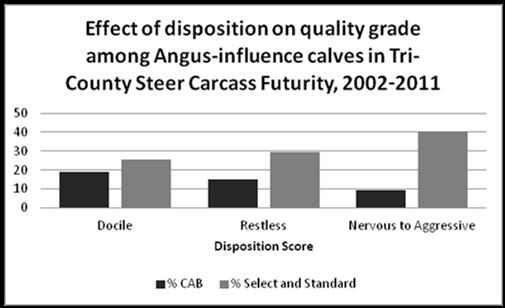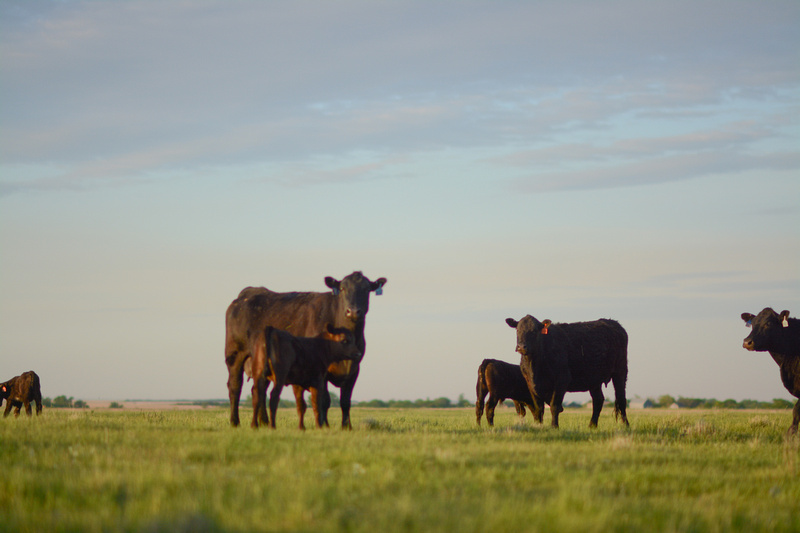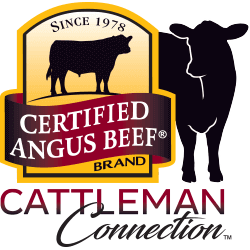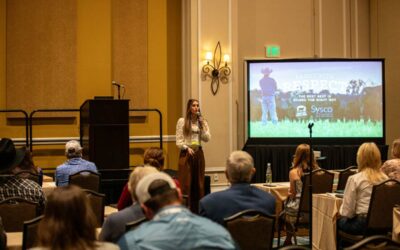
If not born wild or mishandled, dollars add up
by Morgan Slaven
Nobody wants cattle with too much “attitude,” but it takes focused genetics and handling to improve docility in a herd.
“We’ve always tried to be careful about selecting bulls for disposition,” says Roger Jones, of Tri-Tower Farm, near Shenandoah, Iowa. “It’s very important to us to have a cowherd that we can handle, without a lot of wild calves in it. You know, the cattle do better in the feedlot when they aren’t wild.”
Since he operates both enterprises, Jones knows how those issues carry from the field to the feedlot.
“We definitely notice pens of cattle that come in that are wilder,” he says. “Even just one or two individuals, especially when they first arrive, can keep a whole pen stirred up.”
Jones is a cooperating feeder for the Tri-County Steer Carcass Futility (TCSCF), which provides performance and carcass data so that cow-calf producers can improve management. The Futurity began in 1982, charting temperament scores first analyzed by Certified Angus Beef LLC (CAB) nine years ago and recently updated in a Black Ink Basics report.
“Calm cattle reduce injuries and facility damage, stay healthier, perform better on feed and earn higher grid premiums,” says the technical summary, “Nervous Cattle Wreck Profit Potential.”

The data analysis spans 10 years of TCSCF data on more than 65,000 cattle fed in 14 cooperating feedlots. It concludes the docile cattle earn $57.69 per head more on a grid compared to their aggressive pen mates. Part of that comes from the higher Certified Angus Beef ® brand acceptance rate for calm cattle (see chart).
Sally Northcutt, American Angus Association genetic research director, says with that kind of economic impact, it pays to understand the breed’s Docility EPD (expected progeny difference).
More than 490,000 registered Angus cattle now include that “DOC” EPD in their records, with an average of 9, and more docility scores are being collected all the time, with weekly updates.
“One of the nice parts of working with docility is that it is moderately to highly heritable,” Northcutt says.

TCSCF Manager Darrell Busby agrees much can be done through genetic selection, but he points out management still makes a big difference, and that includes handling.
“We have feedlots that check cattle on horseback, on foot and on four wheelers. They’re successful in any method,” he says. “It’s the people doing it that are the most important.”
There’s a positive impact in the feedlot when producers make a point to walk through their cattle every day and participate in low-stress handing workshops.
“We see a general improvement in disposition in the data we’ve collected,” Busby says. In turn, that leads to better gains and quality grades.
Northcutt encourages breeders to use DOC to enhance their overall balanced selection program.
“Some people originally saw docility as a convenience trait, kind of a take it or leave it,” she says. “Now we have breeders who view it as a necessity trait.”
The older and younger ends of the age spectrum, along with part-timers and single-producer operations may benefit the most from introducing docility selection to their program. Even those who see no strong need for that focus may see the dollar impact when buyers compare animals.
“Producers need to continue being good stewards of this trait,” Northcutt says, “because genetics have an impact throughout the value chain.”
You may also like
Marbling, Feet and Fertility: Are they related?
The Angus breed has enough genetic diversity to allow breeders, and their commercial bull customers, to make progress across multiple traits simultaneously. One bloodline may be high in marbling but does not check the boxes you need for other traits. That does not mean marbling is the cause—it simply means your search for the ideal genetic pairing is not done.
Get BQA’d, Meet Coach Tang at Hy-Plains Feedyard
Get BQA’d, or renew an expired certification, on Wednesday afternoon, August 21, 2024, at Hy-Plains Feedyard in Montezuma, Kan. Hear from Jerome Tang, K-State’s men’s basketball coach, about how it takes every player on a team to win. The workshop is free to attend and will offer simultaneous Spanish interpretation.
Raised with Respect™ Cattle Care Campaign Launched This Fall
Raised with Respect™ was developed as part of a strategic cattle care partnership between Sysco and CAB. The collaboration focuses on supporting farmers and ranchers, equipping them with continuing education to stay current on best management practices and helping to increase consumer confidence in beef production.



